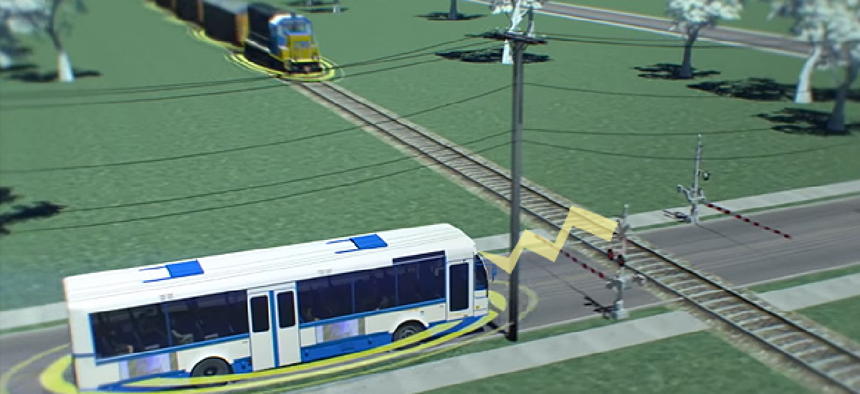Can connected cars and smarter infrastructure make transit safer?


Connecting state and local government leaders
A new report from the GAO breaks down the benefits and challenges facing vehicle-to-infrastructure technology.
What: A look at the challenges and opportunities surrounding "intelligent transportation systems" by the Government Accountability Office.
Why: In the last 20 years, crash-related injury and fatality rates have dropped 37 percent in the United States -- largely due to improvements in automobile safety. Today, vehicle-to-infrastructure (V2I) technologies are being promoted as a way to continue that trend. V2I technologies would allow roadside devices and vehicles to communicate with each other and alert drivers of potential safety issues.
Findings: There is plenty of potential for V2I systems. The Department of Transportation, state and local transportation agencies, researchers and private-sector stakeholders are all involved in pilot programs using V2I technology. Over the next five years, DOT will provide up to $100 million for projects that will test V2I technologies in real-world settings.
For the most part, however, V2I technologies are still in the development stages. Challenges to full deployment include:
- Ensuring that possible sharing of the V2I radio-frequency spectrum with other wireless users will not adversely affect the technologies’ performance.
- Addressing states and local agencies’ lack of resources to deploy and maintain V2I technologies.
- Developing technical standards to ensure interoperability.
- Developing and managing data security and addressing public perceptions related to privacy.
- Ensuring that drivers respond appropriately to V2I warnings.
Takeaway: The benefits and costs of V2I technologies are still largely unknown, GAO concluded, as testing is still ongoing and early deployments have been limited. Full-scale deployments could take another two decades.
Costs are a particular concern. While pilot programs that are producing estimates, true V2I costs will depend on a variety of factors, including where the technology is installed, and how much additional infrastructure is needed to support it and the total cost to operate, maintain and update the systems.
Read the full report here.




